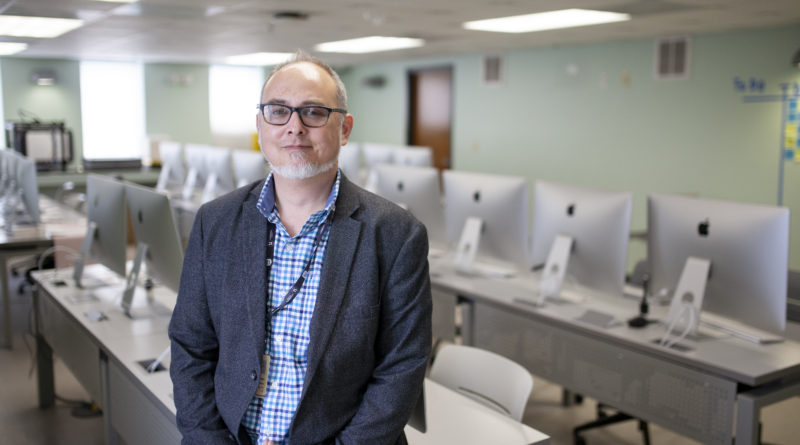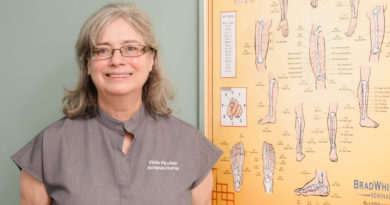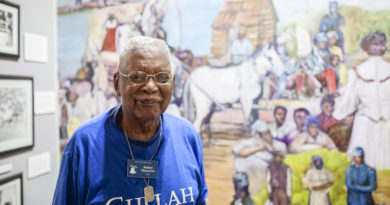Jim Sidletsky
To Infinity and Beyond
story by JEANNE REYNOLDS photos by JOHN WOLLWERTH
Super-nerd life is a dream come true for USCB digital media professor.
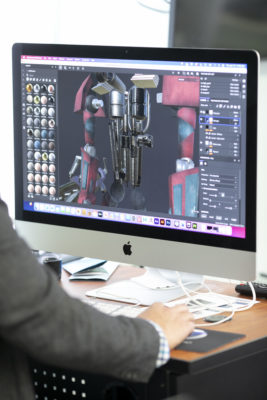 Jim Sidletsky was always good at art growing up, but he had no idea what to do with his life. He thought about teaching, but his career-military father wasn’t enthusiastic about the job’s long-term financial outlook.
Jim Sidletsky was always good at art growing up, but he had no idea what to do with his life. He thought about teaching, but his career-military father wasn’t enthusiastic about the job’s long-term financial outlook.
“My dad said art teachers are always the first to get cut,” said Sidletsky, now an assistant professor in the burgeoning Visual Art and Design Department at the University of South Carolina
-Beaufort. “What eventually sold it is it’s something you can do on a computer.” Think Pixar, DreamWorks, and the now-commonplace, computer-generated visual effects in everything from feature films and TV commercials to websites and video games.
Fortunately, Sidletsky didn’t have to visit a galaxy far, far away to pursue his dream. A bachelor’s degree in computer animation from James Madison University in Virginia led to six years as a graphic designer. That was followed by a master of fine arts degree from the prestigious Savannah College of Art and Design, where he studied interactive design and game development, and worked as a teacher assistant.
That experience encouraged Sidletsky to stay in the classroom on the teaching side of the lectern, heading up Highway 17 to Trident Technical College in Charleston for an 11-year stint as an animation instructor, developing most of the program’s courses along the way. When a position opened up at USCB in 2019, he jumped at the chance to help develop the school’s digital media program.
“In my previous job, when I looked for schools where students could transfer to complete a bachelor’s degree in this field, there just weren’t any around that were affordable,” Sidletsky said.
Now there is.
 Art Meets Computer Science
Art Meets Computer Science
Still, many students don’t know USCB’s media arts program exists, Sidletsky says. “They assume they’ll have to do a lot of programming.” But the program looks at digital media from an artist’s perspective rather than a programmer’s perspective.
“We’re creating art commercially using a computer — we’re creating characters and whole worlds,” he explained. “Think of it like designing a car. The programmer is concerned with how it runs on the inside, and the artist is concerned with how it looks on the outside.”
But the artist and the programmer are two halves of a whole, Sidletsky is quick to agree. In fact, one of the program’s goals is to team up with computational science engineers for more effective design. And it may be fun, but it’s not all games. Sidletsky is also beginning to work with USCB’s history department to create virtual experiences. Imagine stepping ashore with the pilgrims at Plymouth Rock, rowing George Washington across the Delaware River during the Revolutionary War, or sitting next to Amelia Earhart on her flight across the Atlantic Ocean.
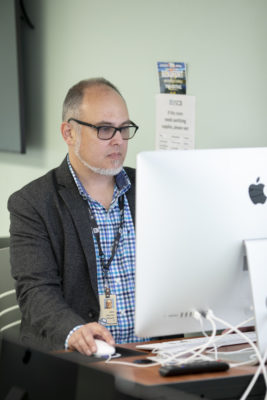 Local Impact, International Success
Local Impact, International Success
Nearer to home, Sidletsky says USCB’s program is filling a need in the local economy. “Because of the pandemic, so many people are working from home, doing business online, and they need help creating content,” he said. “The beauty of Beaufort is we get to concentrate locally.”
The need for local digital media talent was proved last year when Beaufort Digital Corridor member Dolfin Ventures hired one recent graduate, as well as seven interns from the program, to work on video game projects. “They’re working on real projects and getting real-world experience,” Sidletsky said.
A team of his students also got real-world experience recently
— along with real-world kudos — when an animated short film they produced was accepted by the Beaufort International Film Festival. The Ghostly Lovers of Fripp Island will be screened during the festival one day between February 23 and 27 at USCB’s Center for the Arts, 801 Carteret Street. Get a sneak preview of the film on USCB’s Media Arts website at https://www.uscb.edu/academics/academic_departments/school-of-humanities-and-social-sciences/visual-art-and-design/media-arts.html.
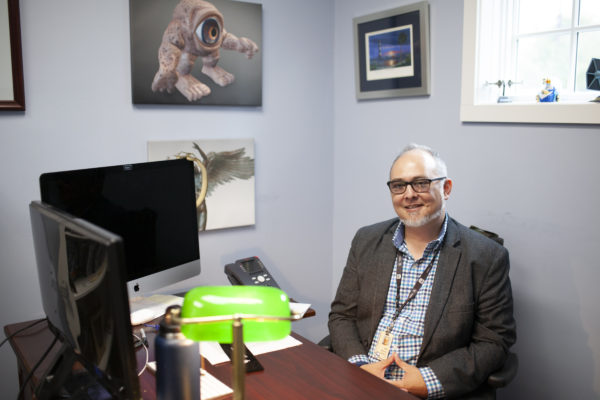
Living the Dream
Three years in, Sidletsky says the media arts program is more focused now than when he arrived. Graduates leave equipped for careers as print and motion graphic designers (combining animation and typography frequently used in broadcast advertising), website user experience experts, video game designers, web application creators and illustrators — and in at least one case, a mascot designer creating costumes for large schools and minor league baseball teams.
“The good thing about this program is it’s small, but it’s growing,” he said, estimating a total enrollment of about 60, including 15 new students this year. “We’re giving students a home to try it, giving them a little bit of a launching pad.”
The degree isn’t a magic pill, though. “I compare it to being a violinist,” Sidletsky said. “Just because you have the instrument doesn’t mean you can play it. You have to practice, practice, practice. You’ve got to work hard. Your success is in your own hands.”
And it’s worth it, he adds.
“It’s almost like a dream to go and do something you really love.”

